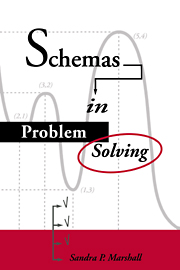V - Schema models
Published online by Cambridge University Press: 22 October 2009
Summary
Models of aspects of human learning and performance serve a multitude of different purposes. The purposes for which the models are applied here are twofold. First and foremost, they evaluate specific aspects of schema theory. If associations are developed as suggested in earlier chapters, then models embedding those associations ought to capture a number of characteristics of human performance accurately and efficiently. Second, the models provide evaluations of how accurately a domain is specified. A central premise of schema theory is that the underlying situations are sufficiently distinct to warrant development of separate schemas for them. If models can recognize and distinguish among those situations, they provide strong support for the separability.
Chapter 12 describes three types of models: production systems, neural networks, and hybrid models. The general structure of each is described as well as the most well known examples.
Chapters 13, 14, and 15 describe particular models developed from the schema theory and problem-solving studies discussed in previous chapters. Chapter 13 contains details about a full computer simulation of the first experiment of Chapter 7. Chapter 14 describes a back propagation connectionist model for the same conditions. And, finally, chapter 15 contains the full hybrid model of schema implementation.
- Type
- Chapter
- Information
- Schemas in Problem Solving , pp. 315 - 316Publisher: Cambridge University PressPrint publication year: 1995



